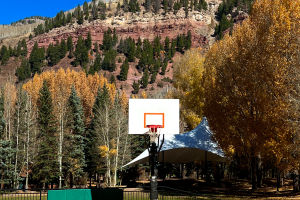Have you ever wondered why sloths move so slowly?
These lovable creatures are often the subject of curiosity. Sloths are iconic for their ultra-slow movements, which may seem odd considering the fast-paced world around them.
But is there more to this slowness than just laziness? Let's explore the fascinating biology and survival strategies behind their famously slow pace.
Slow Metabolism: The Key to Their Leisurely Lifestyle
One of the primary reasons sloths are so slow is their incredibly slow metabolism. Unlike animals that are built for speed, sloths conserve energy by moving at a sluggish pace. Their metabolic rate is one of the slowest in the animal kingdom, and they burn very few calories. This slow metabolism is actually a survival strategy. In the dense, tropical forests where sloths live, food is scarce and not always easy to digest. By slowing down their metabolic processes, sloths can survive on a diet of leaves, which provides limited nutrition. They only need to eat small amounts of food each day, which means they don't need to rush around looking for it.
Body Temperature and Energy Conservation
Sloths are also cold-blooded, meaning their body temperature depends on the environment. Unlike warm-blooded creatures that can maintain a constant internal temperature, sloths need to adjust to their surroundings. This means they need to conserve energy by limiting their movements to avoid wasting heat. To help with this, sloths spend most of their time hanging in the trees, where they are sheltered from the heat of the ground. Their sluggish pace helps regulate their body temperature, ensuring they don't expend unnecessary energy.
Physical Adaptations for Slow Movement
Sloths' physical bodies are uniquely suited to their slow-paced lifestyle. Their long, curved claws help them latch onto tree branches with minimal effort, making it easy for them to hang without using much energy. Their muscles are built for hanging rather than walking, and their bones are dense, which adds weight and allows them to stay anchored while they rest. Sloths have a small, compact body, which further minimizes their energy consumption.
Despite these adaptations, sloths are not entirely helpless. When needed, they can swim surprisingly well, using their long arms to paddle across water. But even in these situations, they move slowly and gracefully, in tune with their need for energy conservation.
Sloths and Their Predators: Staying Hidden and Safe
One of the most fascinating aspects of sloth behavior is their ability to stay hidden from predators. Their slow movement and ability to remain still for long periods make them virtually invisible in the dense jungle. Their fur, which is home to algae, provides camouflage that blends seamlessly with the trees and leaves around them. By staying still and camouflaged, sloths reduce the risk of being noticed by predators like jaguars or ocelots.
This camouflage strategy works particularly well in their natural habitat, where movement could attract predators. The more still they remain, the less likely they are to be spotted.
The Slow Lifestyle as a Survival Strategy
While the sloth's slow movement may seem like a disadvantage in a world where speed is often equated with survival, it is actually an incredibly effective strategy. By conserving energy, avoiding predators, and limiting their physical exertion, sloths have adapted to thrive in their environment. Their slow pace allows them to live in a way that maximizes efficiency, not speed.
Their behavior is a reminder that survival doesn't always require strength or speed. Sometimes, the ability to slow down and adapt is the best way to thrive.
Conclusion: Embracing the Sloth's Wisdom
Next time you spot a sloth in a documentary or at the zoo, take a moment to appreciate the genius behind their slow movements. It's easy to assume that animals like sloths are simply "lazy" or inefficient, but the truth is far more fascinating. Their survival in one of the most competitive environments on Earth is a testament to the power of slowness, patience, and energy conservation.
In a world that often emphasizes speed and hustle, sloths offer us a valuable lesson: sometimes, slowing down is the key to success. We can all learn something from the sloth's secret life — that taking things slowly can be a smart and sustainable way to navigate the world.
Do you have any favorite animal behaviors you're curious about? Let me know, and we can dive into more fascinating animal facts together!


